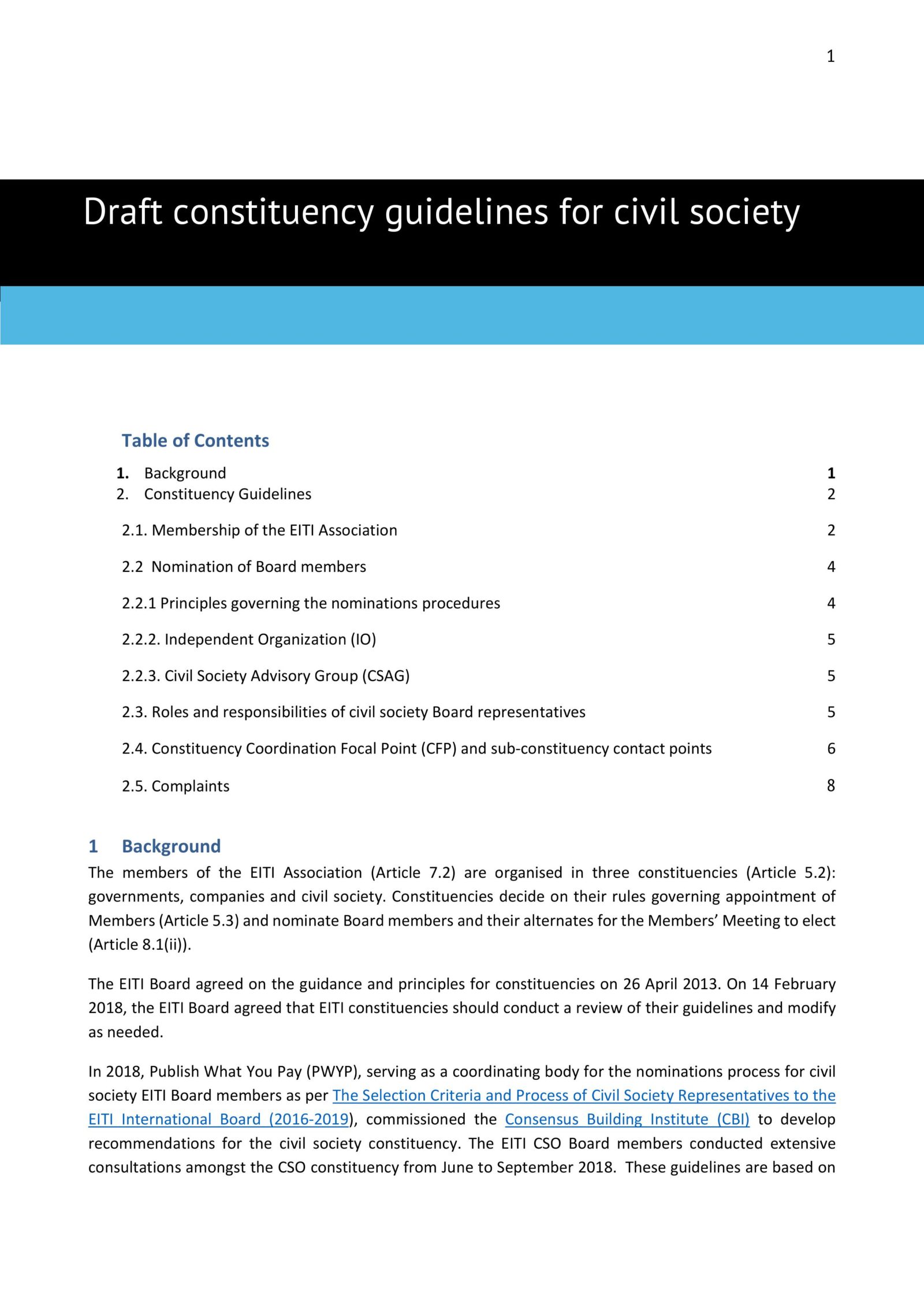The members of the EITI Association (Article 7.2) are organised in three constituencies (Article 5.2): governments, companies and civil society. Constituencies decide on their rules governing appointment of Members (Article 5.3) and nominate Board members and their alternates for the Members’ Meeting to elect
(Article 8.1(ii)).
The EITI Board agreed on the guidance and principles for constituencies on 26 April 2013. On 14 February 2018, the EITI Board agreed that EITI constituencies should conduct a review of their guidelines and modify as needed.
In 2018, Publish What You Pay (PWYP), serving as a coordinating body for the nominations process for civil society EITI Board members as per The Selection Criteria and Process of Civil Society Representatives to the EITI International Board (2016-2019), commissioned the Consensus Building Institute (CBI) to develop recommendations for the civil society constituency. The EITI CSO Board members conducted extensive consultations amongst the CSO constituency from June to September 2018. These guidelines are based on Draft constituency guidelines for civil society the consultations around the CBI recommendations and endorsed by the EITI CSO Board members 2016-2019 in February 2019.
This document defines the CSO constituency membership, the application process, the management of the registry, and the renewal of membership. It also outlines the nomination process of the CSO board members. An “independent organization” may be contracted by the EITI Secretariat and/or the CSO Coordination Focal Point (CFP) to facilitate the selection process which will be done by a “Civil Society Advisory Group” (CSAG) composed of civil society representatives. It contains the responsibilities of the CSO Board members which include regular consultation with CSO constituencies, and identification of the “Constituency Coordination Focal Point”. The CFP will be an organization that will assist the Board members in delivering their obligations to the EITI and the CSO constituencies. The CSO board members will also serve as the sub-constituency contact points. Finally, this document provides a grievance mechanism for the constituency.











